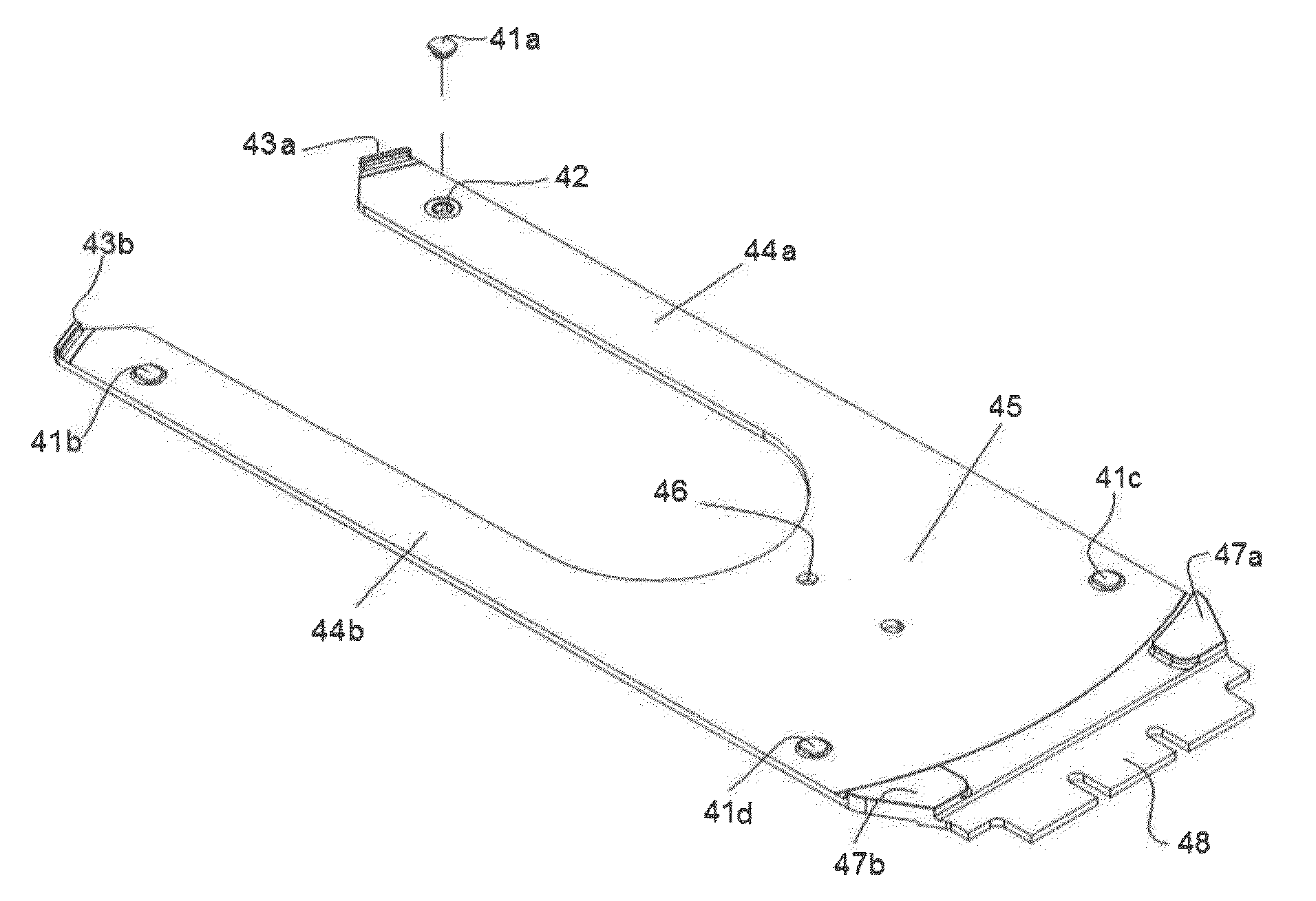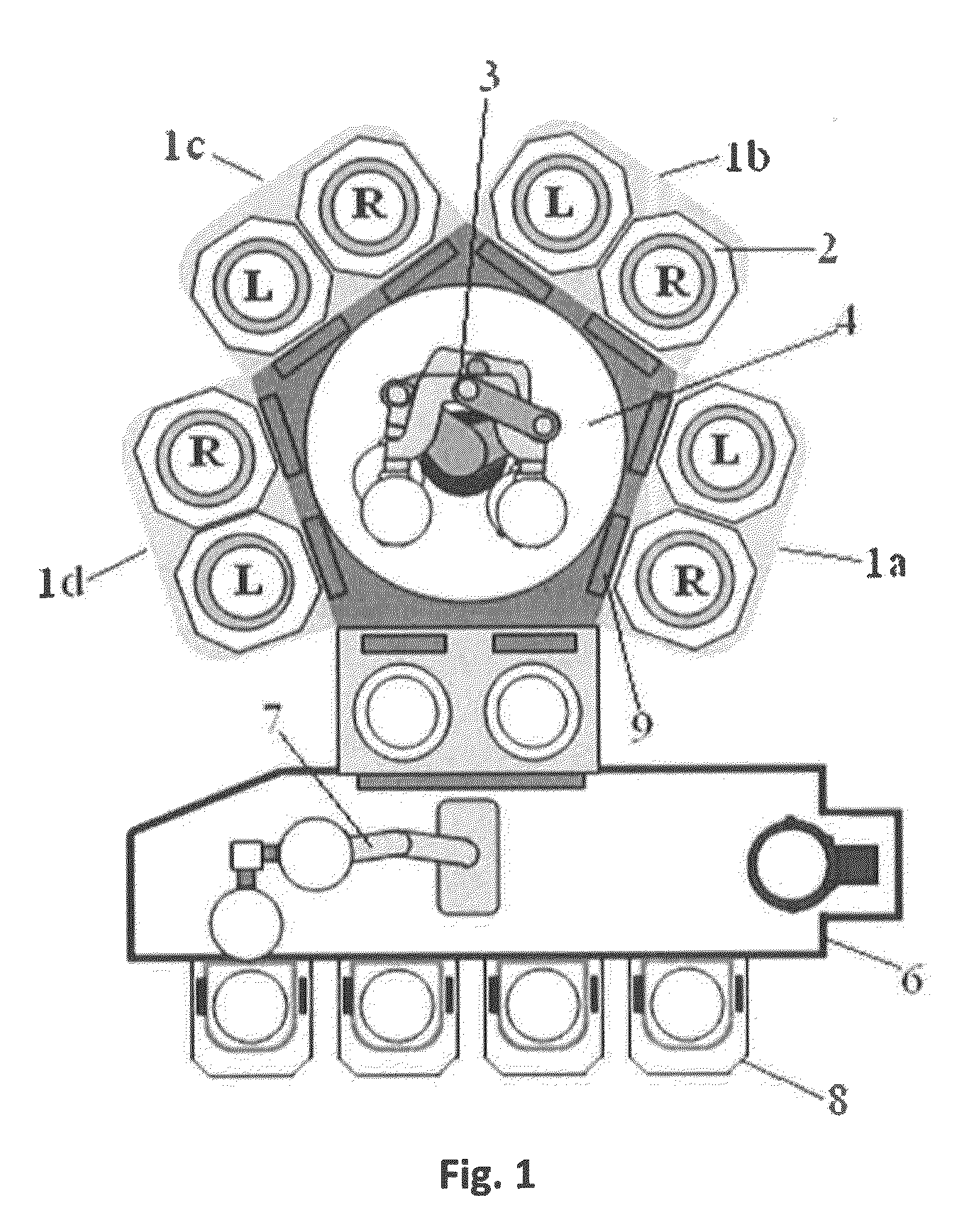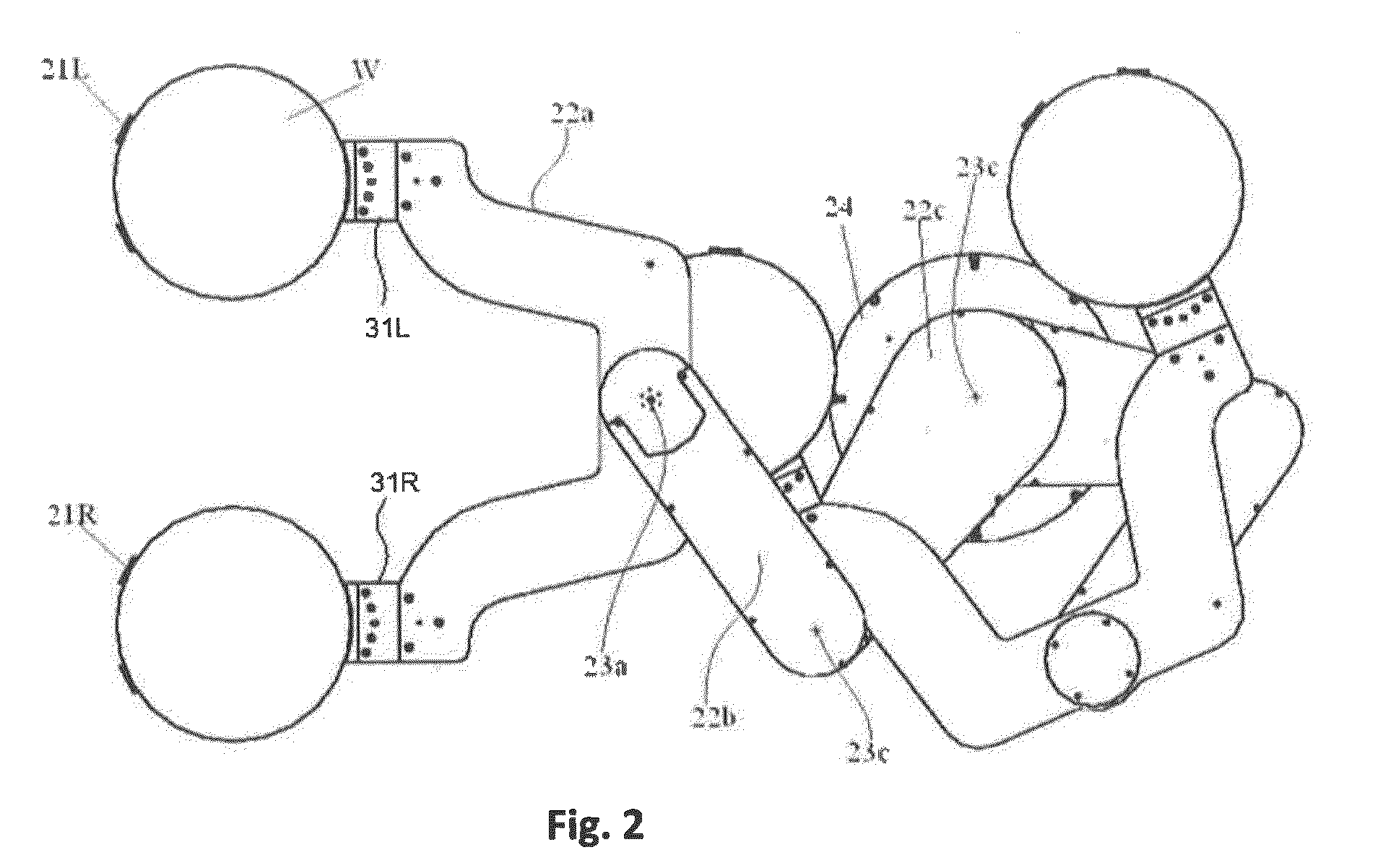Anti-slip end-effector for transporting workpiece
a technology of end-effector and workpiece, which is applied in the direction of manipulators, gripping heads, electrical devices, etc., can solve the problems of reducing transfer stability and transfer error
- Summary
- Abstract
- Description
- Claims
- Application Information
AI Technical Summary
Benefits of technology
Problems solved by technology
Method used
Image
Examples
example 1
[0052]The following pins having a cross section illustrated in FIG. 4 (except that the surface roughness varied and the thickness of the head part was 1.5 mm) were prepared:
[0053](1) Pins made of Al2O3 having a top face with a surface roughness (Ra) of 0.4 μm and a spherical radium (SR) of 10 mm.
[0054](2) Pins made of polybenzimidazole (PBI) having a top face with an Ra of 0.05 μm and a SR of 10 mm.
[0055](3) Pins made of PBI having a top face with an Ra of 0.4 μm and a SR of 10 mm.
[0056](4) Pins made of PBI (with shot blasting treatment) having a top face with an Ra of 1.2 μm and a SR of 10 mm.
[0057]Four pins of each type were installed on a wafer stage of a static friction coefficient measuring device illustrated in FIG. 8. A 300-mm Si wafer was placed on the wafer stage with the pins, and by lifting the wafer stage, a sliding angle θ at which the wafer started sliding was measured as illustrated in FIG. 9. The static friction coefficient was calculated as tan θ. The above static f...
example 2
[0060]The following pins having a cross section illustrated in FIG. 4 (except that the spherical radius varied and the thickness of the head part was 1.5 mm) were prepared:
[0061](5) Pins made of PBI having a top face with an Ra of 0.05 μm and a spherical radius (SR) of 2.5 mm.
[0062](6) Pins made of PBI having a top face with an Ra of 0.05 μm and a SR of 20 mm.
[0063]Four pins of each type were installed on the wafer stage of the static friction coefficient measuring device illustrated in FIG. 8. A 300-mm Si wafer was placed on the wafer stage with the pins, and by lifting the wafer stage, a sliding angle θ at which the wafer started sliding was measured as illustrated in FIG. 9. The static friction coefficient was calculated as tan θ. The above static friction coefficient measuring steps were continuously repeated. FIG. 6 is a graph showing changes of static friction coefficient of pins (5) (SR 2.5), pins (6) (SR 20), and pins (2) (SR 10) (which were used in Example 1) in relation to...
example 3
[0066]The following pins having a cross section illustrated in FIG. 4 (except that the spherical radius was 10 mm, the thickness of the head part was 1.5 mm, and a surface roughness was 0.4 μm) were prepared:
[0067](7) Pins made of Al2O3.
[0068](8) Pins made of PBI (CELAZOLE®).
[0069](9) Pins made of quartz.
[0070]Four pins of each type were installed on the wafer stage of the static friction coefficient measuring device illustrated in FIG. 8. A 300-mm Si wafer was placed on the wafer stage with the pins, and by lifting the wafer stage, a sliding angle θ at which the wafer started sliding was measured as illustrated in FIG. 9. The static friction coefficient was calculated as tan θ. The above static friction coefficient measuring steps were continuously repeated 60 times. The same steps were conducted using a 300-mm Si wafer having a different film formed thereon. FIG. 7 is a graph showing changes of static friction coefficient of pins (7) (Al2O3), pins (8) (CELAZOLE), and pins (9) (qua...
PUM
| Property | Measurement | Unit |
|---|---|---|
| surface roughness | aaaaa | aaaaa |
| radius | aaaaa | aaaaa |
| surface roughness | aaaaa | aaaaa |
Abstract
Description
Claims
Application Information
 Login to View More
Login to View More - R&D
- Intellectual Property
- Life Sciences
- Materials
- Tech Scout
- Unparalleled Data Quality
- Higher Quality Content
- 60% Fewer Hallucinations
Browse by: Latest US Patents, China's latest patents, Technical Efficacy Thesaurus, Application Domain, Technology Topic, Popular Technical Reports.
© 2025 PatSnap. All rights reserved.Legal|Privacy policy|Modern Slavery Act Transparency Statement|Sitemap|About US| Contact US: help@patsnap.com



